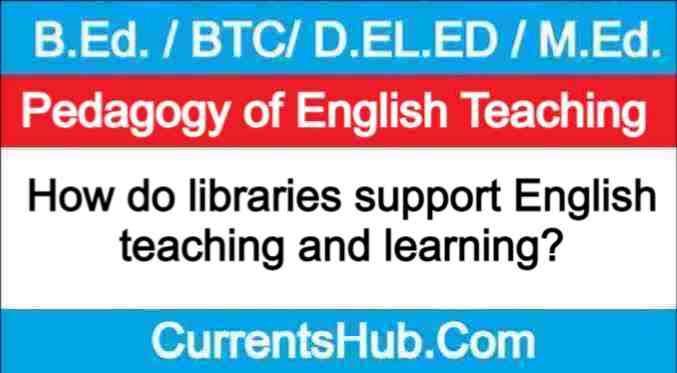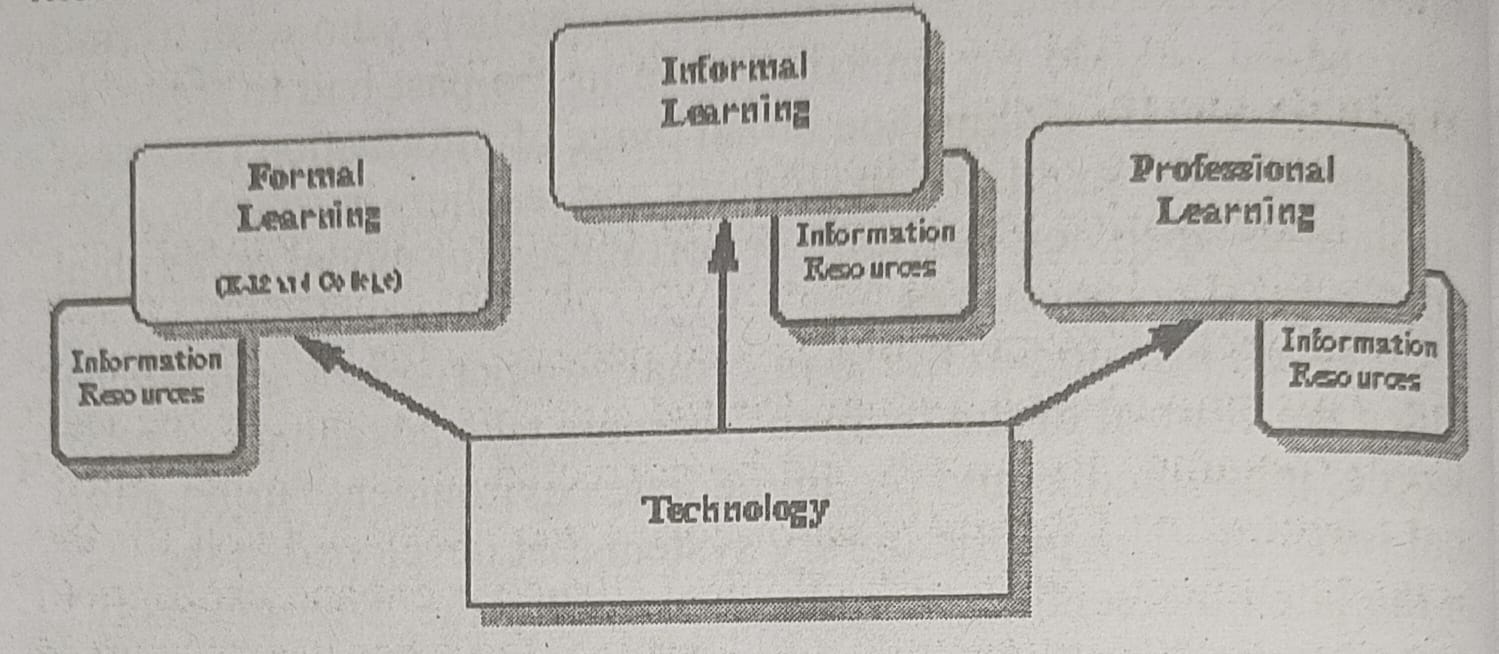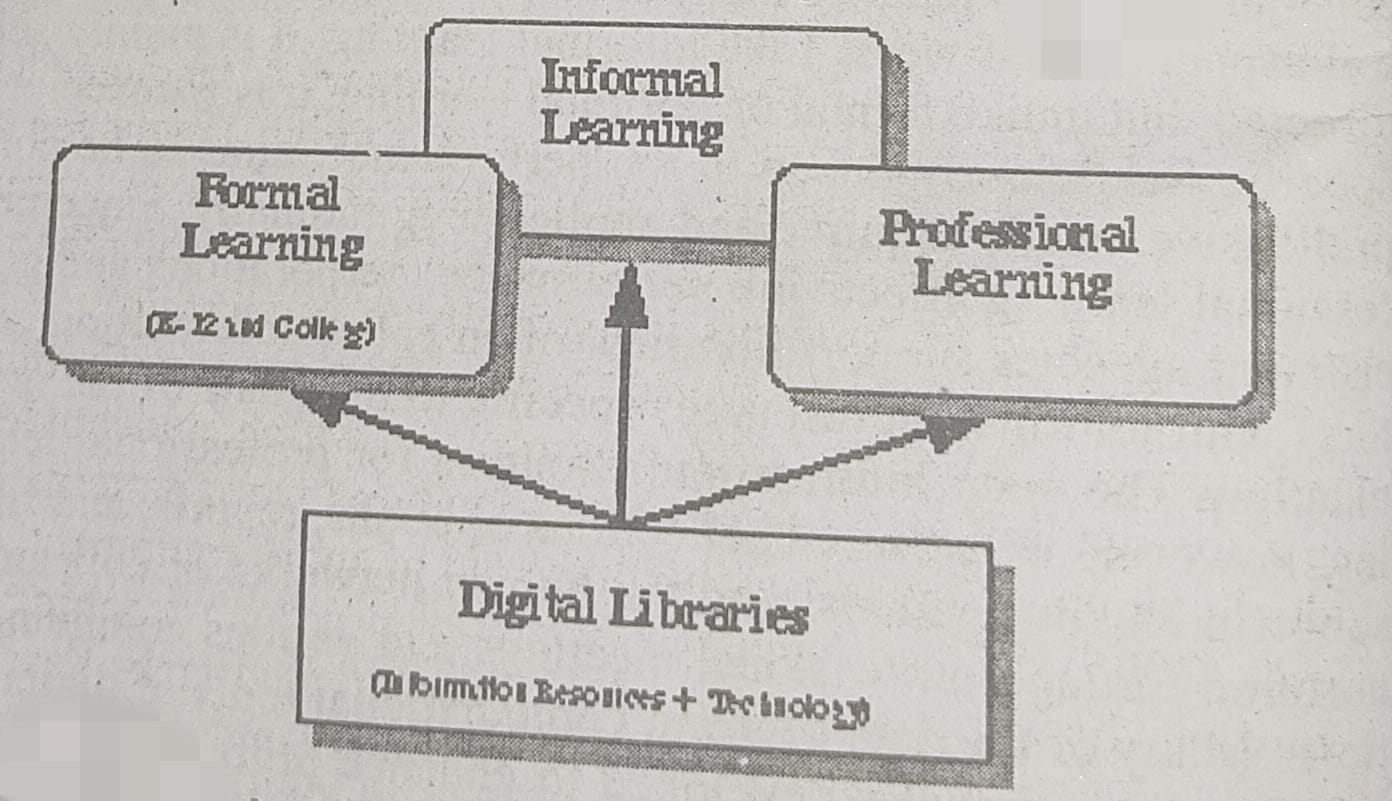
अनुक्रम (Contents)
How do libraries support English teaching and learning?
A library is fundamentally an organized set of resources, which include human services as well as the entire spectrum of media (e.g., text, video, hypermedia). Libraries have physical components such as space, equipment, and storage media; intellectual components such as collection policies that determine what materials will be included and organizational schemes that determine how the collection is accessed; and people who manage the physical and intellectual components and interact with users to solve information problems.
Libraries serve at least three roles in learning. First, they serve a practical role in sharing expensive resources. Physical resources such as books and periodicals, films and videos, software and electronic databases, and specialized tools such as projectors, graphics equipment and cameras are shared by a community of users. Human resources-librarians (also called media specialists or information specialists) support instructional programs by responding to the requests of teachers and students (responsive service) and by initiating activities for teachers and students (proactive services). Responsive services include maintaining reserve materials, answering reference questions, providing bibliographic instruction, developing media packages, recommending books or films, and teaching users how to use materials. Proactive services include se lective dissemination of information to faculty and students, initiating thematic events, collaborating with instructors to plan instruction, and introducing new instructional methods and tools. In these ways, libraries serve to allow instructors and students to share expensive materials and expertise.
Second, libraries serve a cultural role in preserving and organizing artifacts and ideas. Great works of literature, art, and science must be preserved and made accessible to future learners. Although libraries have traditionally been viewed as facilities for printed artifacts, primary and secondary school libraries often also serve as museums and laboratories. Libraries preserve objects through careful storage procedures, policies of borrowing and use, and repair and maintenance as needed. In addition to preservation, libraries ensure access to materials through indexes, catalogs, and other finding aids that allow learners to locate items appropriate to their needs.
Third, libraries serve social and intellectual roles in bringing together people and ideas. This is distinct from the practical role of sharing resources in that libraries provide a physical place for teachers and learners to meet outside the structure of the class room, thus allowing people with different perspectives to interact in a knowledge space that is both larger and more general than that shared by any single discipline or affinity group. Browsing a catalog in a library provides a global view for people engaged in spe cialized study and offers opportunities for serendipitous insights or alternative views. In many respects, libraries serve as centers of interdisciplinarity-places shared by learners from all disciplines. Digital libraries extend such interdisciplinarity by making diverse information resources available beyond the physical space shared by groups of learners. One of the greatest benefits of digital libraries is bringing together people with formal, informal, and professional learning missions.
Formal learning is systematic and guided by instruction. Formal learning takes place in courses offered at schools of various kinds and in training courses or programs on the job. The important roles that libraries serve in formal learning are illustrated by their physical prominence on university campuses and the number of courses that make direct use of library services and materials. Most of the information resources in schools are tied directly to the instructional mission. Students or teachers who wish to find information outside this mission have in the past had to travel to other libraries. By making the broad range of information resources discussed below available to students and teachers in schools, digital libraries open new learning opportunities for global rather than strictly local communities.
Much learning in life is informal-opportunistic and strictly under the control of the learner. Learners take advantage of other people, mass media, and the immediate environment during informal learning. The public library system that developed in the U.S. in the late nineteenth century has been called the “free university”, since public libraries were created to provide free access to the world’s knowledge. Public libraries provide classic nonfiction books, a wide range of periodicals, reference sources, and audio and video tapes so that patrons can learn about topics of their own choosing at their own pace and style. Just as computing technology and world-wide telecommunications networks are beginning to change what is possible in formal classrooms, they are changing how individuals pursue personal learning missions.
Professional learning refers to the ongoing learning adults engage in to do their work and to improve their work-related knowledge and skills. In fact, for many professionals, learning is the central aspect of their work. Like informal learning, it is mainly selfdirected, but unlike formal or informal learning, it is focused on a specific field closely linked to job performance, aims to be comprehensive, and is acquired and applied longitudinally. Since professional learning affects job performance, corporations and government agencies support libraries (often called information centers) with information resources specific to the goals of the organization. The main information resources for professional learning, however, are personal collections of books, reports, and files; subscriptions to journals; and the human networks of colleagues nurtured through professional meetings and various communications. Many of the data sets and computational tools of digital libraries were originally developed to enhance professional learning.
The information resources-both physical and human-that support these types of learning are customized for specific missions and have traditionally been physically separated, although common technologies such as printing, photography, and computing are found across all settings. This situation, is depicted in Figure 1.
Figure 1. Current model of technological support for type of learning
Digital libraries combine technology and information resources to allow remote access, breaking down the physical barriers between resources. Although these resources will remain specialized to meet the needs of specific communities of learners, digital libraries will allow teachers and students to take advantage of wider ranges of materials and communicate with people outside the formal learning environment. This will allow more integration of the different types of learning, as depicted in Figure 2.
Figure 2. Digital libraries lead to integrated resources and type of learning.
Although not all students or teachers in formal learning settings will use information resources beyond their circumscribed curriculum and not all professionals will want to interact even occasionally with novices, digital libraries will allow learners of all types to share resources, time and energy, and expertise to their mutual benefits.
इसी भी पढ़ें…
- Concept Maps and Curriculum Design
- Criteria for the Selection of Subject-Matter or Content of the Curriculum
- Analysing and evaluating a textbook
- Methods for Evaluating Text books
- Describe Subjective vs Objective Approach
- What principles should underlie the selection of materials?
- Types of Text book Analysis
- Write perceptual features of cognitive theory
- Discuss the basis of evaluating a content
- Differences between Syllabus and Curriculum
- Characteristics Of A Good Textbook








